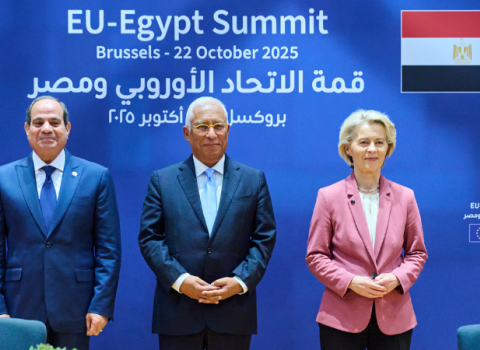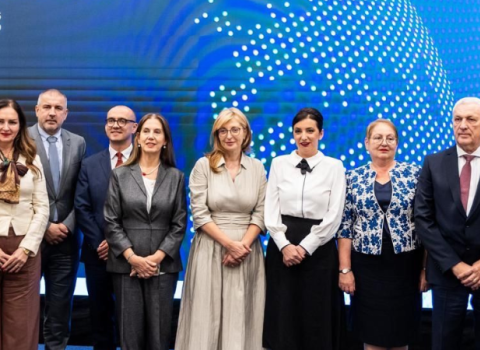The new-look Joint Technology Initiatives (JTIs) to be launched next January will be more accessible, more ambitious and more transparent. “This is not business as usual,” R&D Commissioner Máire Geoghegan-Quinn told MEPs on the Industry, Research and Energy Committee as she outlined exactly how the initiatives have been reformed and how they will operate under the €70 billion Horizon 2020 programme.
For a start, the budget for the JTIs, which are co-funded by the Commission and industry, will rise from €10 billion under Framework Programme Seven (FP7) to €17 billion under Horizon 2020. This reflects a “new level of ambition and greater commitment from the industry partners,” said Geoghegan-Quinn. The return on investment will be better tracked, with more concrete objectives and new performance indicators for each JTI.
The executive directors of the existing JTIs established under FP7 claim the partnerships are already contributing to Europe’s competitiveness, but say more time and money is needed to consolidate the objectives and scale up the technologies. “JTIs are becoming the flagship for research in different sectors,” said Eric Dautriat, Executive Director of Clean Sky, the aeronautics and air transport JTI, at a briefing outlining the achievements of JTIs to date. JTIs are also strong supporters of Europe’s SMEs, which make up 31 per cent of all project participants, Dautriat noted.
As well as increasing Europe’s investment in R&D by drawing in funds from the private sector, JTIs are bringing the major players in the different sectors together to carry out pre-competitive research. “Pharmaceutical companies are increasingly global,” noted Michel Goldman, head of the €2 billion Innovative Medicines Initiative. “Their business models are changing and research is increasingly done externally,” he said. IMI brings together major pharmaceutical companies with European SMEs and research organisations, who are seen as important research partners.
This networking effect resonates across each of the JTIs. “We have been able to develop a fuel cells and hydrogen community in Europe,” said Bert De Colvenaer, Executive Director of the Fuel Cells and Hydrogen Joint Undertaking. An industry community, consisting of more than 60 companies, half of them SMEs, has been formed as part of the JTI. This is working alongside more than 60 universities and research institutes. “Without this JTI, I can guarantee you that this sector would be dead in Europe,” said De Colvenaer.
Building networks is of particular importance for SMEs, said Andreas Wild, Executive Director of the ENIAC Joint Undertaking for nanoelectronics. “There are very few indigenous large companies in this field in Europe. Joining networks is one of the most effective ways for SMEs to get their technology into products,” he said.
This is one reason behind the high SME participation across the JTIs. “Apart from the technological developments made, this is the best achievement of the JTIs,” said Dautriat. “Sixty per cent of SMEs in Clean Sky are newcomers to EU Framework Programmes,” he said.
All of the directors are confident that the initiatives will continue to grow from strength to strength in the second wave, due to commence in January.
The new JTIs will step up activities from FP7. For example, the first Fuel Cells and Hydrogen JTI has delivered units for use in forklift trucks and as small back-up power units. Now the aim is to scale these up, making them suitable for more widespread use in road and air transport.
This is an example of how each JTI has been given, “clear and measurable objectives set out in the legal base”, said Geoghegan-Quinn. New key performance indicators will allow closer monitoring and evaluation of progress, she told MEPs last week in advance of the Parliament’s vote on the Horizon 2020 package this autumn.
These higher expectations are matched with a significantly higher level of commitment from industry partners, who provide fifty per cent or more of the total costs of the JTIs. This can come in the form of in-kind contributions and hard cash. The second wave of JTIs will include additional activities solely financed by the industry partners, with an eye on ensuring the effective deployment of the new technologies.
A meeting earlier this year with the chief executives of leading companies in each JTI has convinced Geoghegan-Quinn that industry is committed to the JTIs. “I was particularly struck by the willingness of competitors to join forces on complex, large scale challenges that are critical for Europe,” she told MEPs.
Despite the claims of the executive directors that JTIs have built networks and attracted in SMEs, one of the big criticisms of the current generation of JTIs is that they are overly complex and difficult to take part in. Geoghegan-Quinn claimed the second generation partnerships will deal with this. “We have introduced improved governance of the JTIs to ensure that they are open to new partners and new participants across Europe. In all cases, the majority of EU funding will be allocated through fully open, competitive calls,” she told MEPs.
And whereas JTIs under FP7 all had their own funding rates and rules of participation, the new-look JTIs will follow the standard rules of participation for Horizon 2020. “In addition we have proposed a specific status for the JTIs under the new financial regulations that will make them more efficient,” Geoghegan-Quinn said.
The five JTIs under Horizon 2020 - representing sectors providing more than four million jobs - are:
- Innovative Medicines 2: to develop vaccines and new drugs including treatments for antibiotic resistant infections;
- Fuel Cells and Hydrogen 2: to expand the use of clean and efficient technologies in transport, industry and energy;
- Clean Sky 2: to develop cleaner, quieter aircraft which emit significantly less CO2;
- Bio-based Industries: to use renewable natural resources and develop technologies for manufacturing greener products;
- Electronic Components and Systems: to boost Europe’s electronics manufacturing capabilities;
While the first three are a continuation of FP7 projects, the electronics partnership is a merger of two JTIs from FP7 in nanoelectronics (ENIAC) and embedded computing systems (ARTEMIS). The bioeconomy collaboration is entirely new.
The guiding principle is that these five areas represent large-scale, long-term projects aiming to, “achieve results that one country or company is unlikely to achieve alone,” said Geoghegan Quinn.





 A unique international forum for public research organisations and companies to connect their external engagement with strategic interests around their R&D system.
A unique international forum for public research organisations and companies to connect their external engagement with strategic interests around their R&D system.